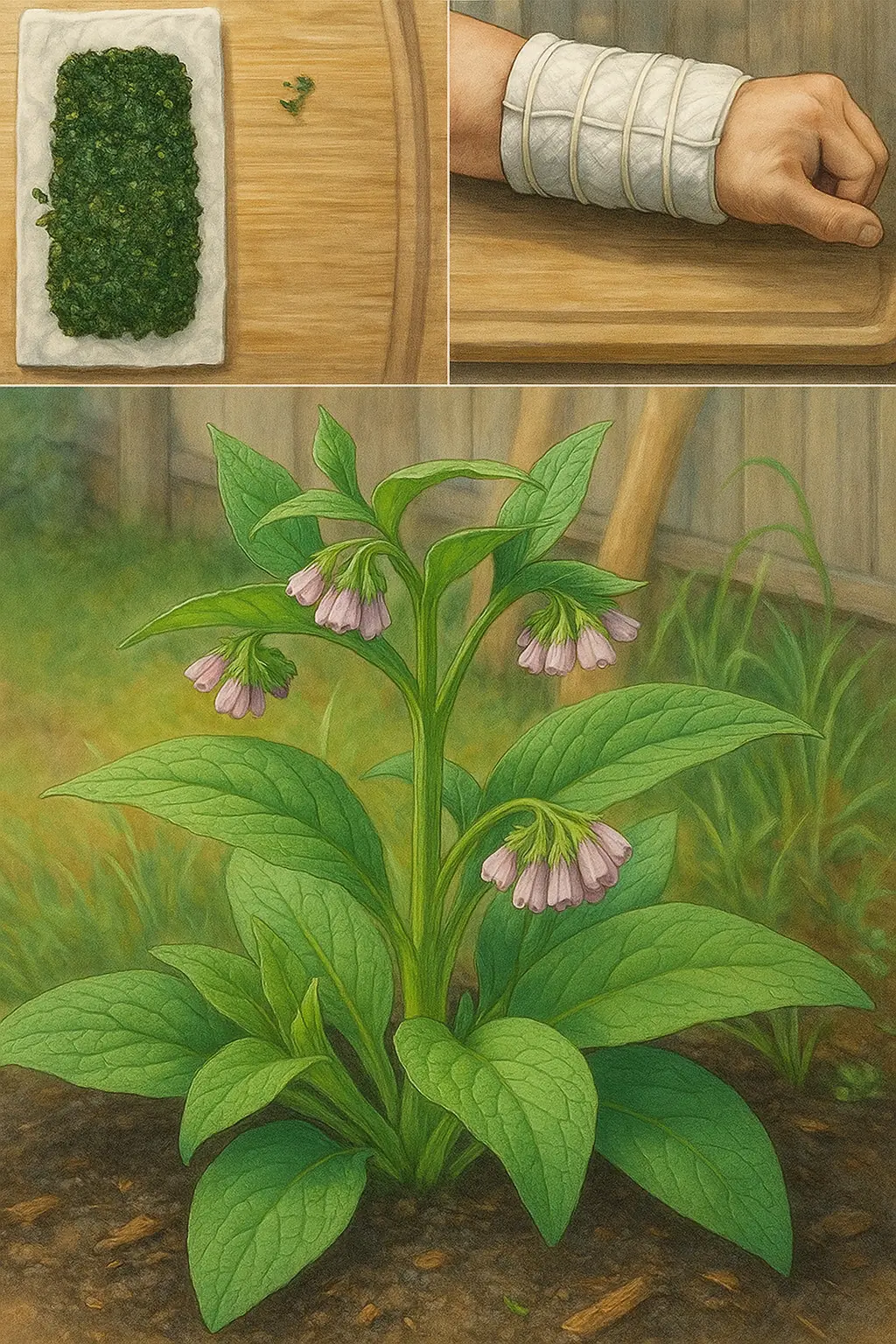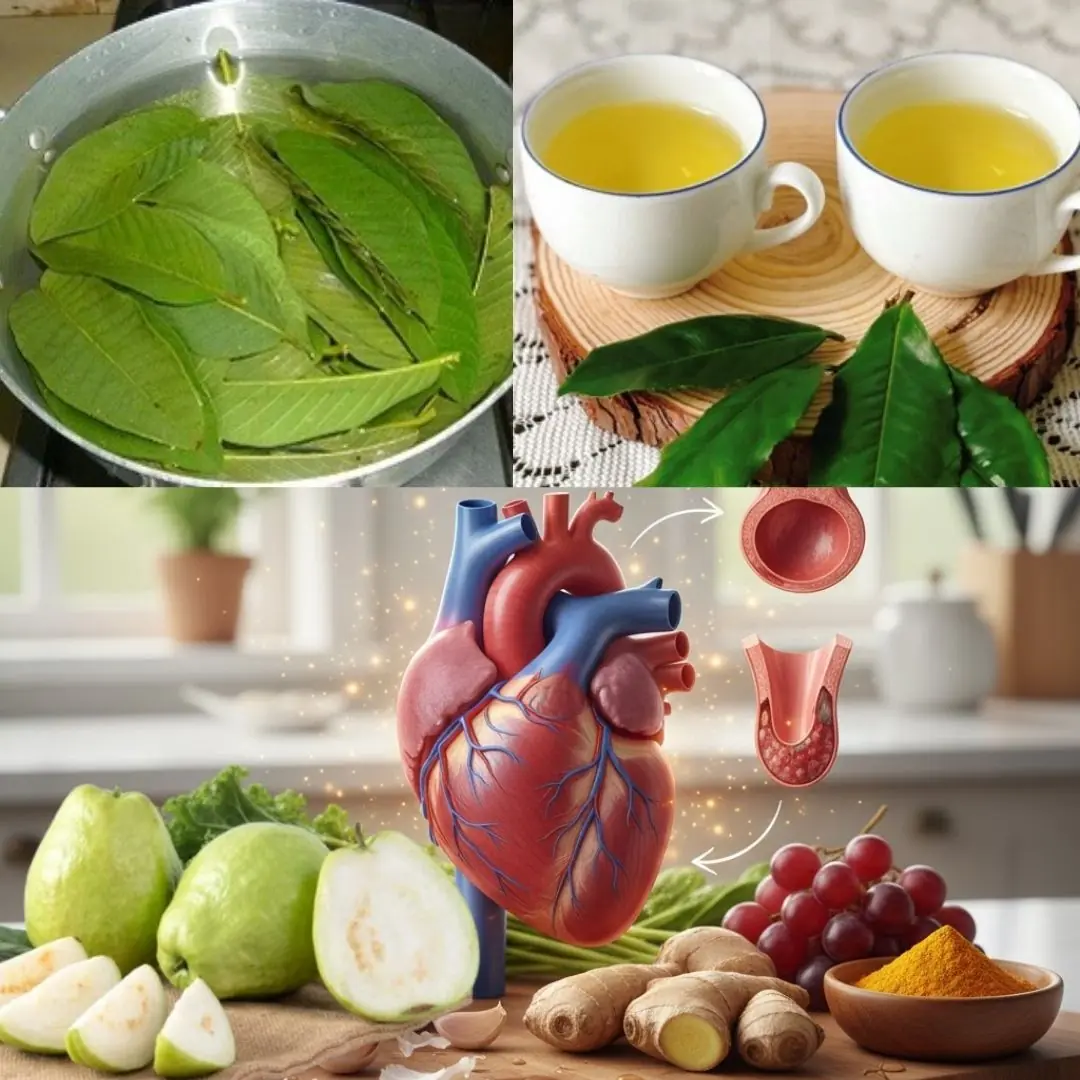
The Incredible Benefits of Common Comfrey: Uses, Remedies, and Precautions

Common comfrey, scientifically known as Symphytum officinale, is one of the most respected herbs in traditional medicine. Often called “knitbone” or “bone-set herb,” comfrey has a long history of use for accelerating healing—particularly for bones, joints, muscles, and the skin. Its powerful regenerative properties have made it a treasured remedy across centuries.
However, despite its impressive benefits, comfrey must be used with caution. Certain compounds in the plant can be harmful if misused, especially when taken internally. This article explores comfrey’s therapeutic advantages, safe methods of application, and essential precautions to keep in mind.
✅ Top Benefits of Common Comfrey
1. Supports Bone and Joint Repair
Comfrey contains allantoin, a compound known to stimulate cell regeneration. Traditionally, it has been used to support the healing of:
-
Fractures
-
Sprains
-
Joint pain
Its nickname “knitbone” comes from this remarkable regenerative power.
2. Reduces Muscle Pain and Inflammation
Thanks to its natural anti-inflammatory properties, comfrey can help ease:
-
Sore muscles
-
Arthritis pain
-
Sports injuries
-
Overuse strain
3. Accelerates Wound Healing
When applied externally, comfrey encourages tissue repair, making it useful for:
-
Small cuts
-
Scratches
-
Minor scrapes
-
Bruises
4. Calms Skin Irritations
Comfrey’s soothing effects help reduce redness, itching, and swelling in conditions such as:
-
Eczema
-
Psoriasis
-
Minor rashes
-
Insect bites
5. Hydrates and Repairs the Skin
The mucilage found in comfrey acts as a natural moisturizer, helping restore dry, cracked, or damaged skin.
6. Speeds Up Bruise Recovery
By improving local circulation, comfrey helps bruises fade more quickly and reduces swelling.
7. Provides Relief for Minor Burns and Sunburns
When used gently and appropriately, comfrey promotes skin regeneration and can soothe minor burns and sunburns.
8. Helps With Sprains and Strains
Athletes often use comfrey poultices or salves to support recovery from tendon or ligament injuries.
9. May Ease Varicose Vein Discomfort
Comfrey improves circulation and reduces swelling, making it a popular topical remedy for aching or inflamed veins.
10. Enhances Hair and Scalp Health
Comfrey-infused rinses or oils can strengthen hair follicles and promote a healthier scalp environment.
✅ How to Use Comfrey Safely (External Use Only)
Comfrey Poultice
Best for bruises, sprains, and minor wounds
-
Crush fresh or dried leaves
-
Add warm water to form a paste
-
Apply to the skin for 30 minutes and cover with cloth
Comfrey-Infused Oil
Ideal for muscle and joint pain
-
Infuse dried leaves in olive or coconut oil for 2–3 weeks
-
Strain and store in a dark bottle
-
Massage onto affected areas
Healing Comfrey Salve
For dry, chapped, or irritated skin
-
Combine comfrey-infused oil with melted beeswax
-
Allow to solidify
-
Apply as needed
Warm Comfrey Compress
Helps with inflammation and swelling
-
Simmer leaves in water for 5 minutes
-
Soak a cloth in the warm liquid
-
Apply to painful areas
Comfrey Hair Rinse
Supports scalp health and hair strength
-
Brew a comfrey leaf tea
-
Let it cool
-
Use as a final rinse after shampooing
⚠️ Do NOT Use Comfrey Internally
Comfrey contains pyrrolizidine alkaloids (PAs), which can cause serious liver damage when ingested.
-
Some countries have banned comfrey supplements
-
Internal use (teas, extracts, capsules) is strongly discouraged
⚠️ Precautions & Safety Tips
-
❌ Do not apply on deep or infected wounds — skin may heal too quickly and trap infection inside
-
❌ Avoid during pregnancy or breastfeeding — risk of PA absorption
-
❌ Avoid long-term continuous use — take breaks between treatment cycles
-
❌ Do not apply on large broken skin areas repeatedly — small amounts of toxins may absorb through the skin
✅ Final Thoughts
Common comfrey is an extraordinary medicinal plant with powerful healing potential. When used externally and responsibly, it can offer impressive relief for bone injuries, muscle pain, inflammation, and various skin conditions. However, internal use is unsafe due to its toxic alkaloids, and caution is essential even with topical applications.
Used wisely, comfrey can become a valuable addition to your natural remedy collection.
Would you consider using comfrey as part of your herbal toolkit? Let us know your thoughts! 🌿😊
News in the same category


14 Reasons to Drink Lemon Water First Thing in the Morning

The #1 Food for Detoxifying and Supporting Kidney Health

Dark Chocolate and Tea Found to Significantly Lower Blood Pressure

Why This Doctor Refuses to Prescribe Statins for High Cholesterol

Top 5 Foods to Avoid if You Have High Blood Pressure

How bathing too often can affect your health

Did you know that if you get spots on your hands it means you have

This starves colon cancer cells — and strengthens your body’s natural defenses

7 COLLAGEN-boosting foods to ERASE joint pain & inflammation FAST!

The Human Brain Isn’t Built for Late Nights, Experts Warn

Harvard Doctor Reveals Foods You Should Avoid to Prevent Inflammation

Unlock Your Body’s Hidden Power: Try Garlic and Honey on an Empty Stomach for 7 Days

Starve cancer: the diet rotation strategy you need to know

SHOCKING NEW STUDY REVEALS WHAT MIGHT BE SILENTLY DESTROYING HUMAN FERTILITY

POPULAR SHAMPOO URGENTLY RECALLED BECAUSE IT CONTAINS BACTERIA THAT KILLS UP TO ONE IN TEN PATIENTS

Nurse who's witnessed 'so many deaths' explains spine-chilling moment she realised 'what happens after we die'

The influenza flu virus is being used to cure pancreatic cancer

Eye Doctor Reveals What To Do If You Start Seeing ‘Floaters’
News Post

Don't boil chicken with salt and plain water, or it will turn out fishy and reddish. Try this method for golden skin and sweet meat.

Don't throw away tea that's been left overnight: It has up to 5 amazing uses that everyone will love

The Best Tea for Mornings and After Dinner: A Powerful Blend for Health

Homemade Vitamin E Cream for Face – Vitamin E Oil benefits for Skin

DIY Rice Cream for Glowing Skin - The Ultimate Anti-Aging Moisturizer

This DIY curry leaves and lemon oil can give your hair healthy growth

Grow Date Trees From Seed (Start in a Pot → Plant Outdoors): The Complete, No-Stress Guide

Should You Place a Fan Close to or Far from the Bed While Sleeping? Many Homes Are Doing It Wrong

Simple, Cost-Free Ways to Fix Moldy or Peeling Walls — Easy Solutions for Every Home

Why Do Fish Sellers Often Use Black Plastic Bags? A Simple Trick Few People Notice

Why Do We Burn Steel Scrub Pads Over Fire? Many People Don’t Know This Useful Trick

Scientists discover evidence of 'Adam and Eve' living 200,000 years ago

14 Reasons to Drink Lemon Water First Thing in the Morning

You're doing it all wrong. Here’s the right way to store potatoes

You're doing it all wrong. Here’s the right way to store tomatoes

Drink THIS every morning to BOOST leg circulation!

Preserving eggs without a refrigerator, using this method, the eggs will stay fresh for a whole month

Drop a Silver Foil Ball Into Your Toilet — The Results Are Surprisingly Brilliant
